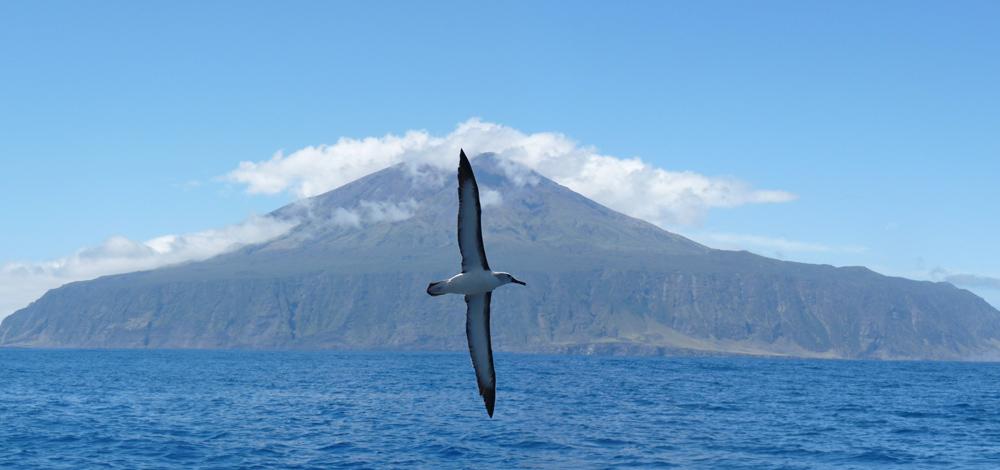Geographical and political context of Tristan da Cunha.
-
Tristan da Cunha is the most remote inhabited archipelago, situated in the South Atlantic Ocean between South Africa and South America.
Tristan da Cunha stands as the most remote inhabited archipelago on Earth, positioned centrally within the South Atlantic Ocean, approximately 2,400 kilometers (1,500 miles) from South Africa to the east and an even greater 3,360 kilometers (2,090 miles) from South America to the west. Its geographic isolation presents profound implications for its human geography, as the island’s remoteness necessitates a high degree of self-sufficiency and fosters a deeply interdependent community structure. This distance from other landmasses has also significantly shaped the flow of goods, information, and people, with periodic supply ships and limited connectivity reinforcing its unique socio-spatial dynamics.
Spatially, Tristan da Cunha’s position serves as both a challenge and an advantage. Its proximity to essential maritime pathways has historically allowed occasional contact with passing ships, aiding in the exchange of limited resources and information. Simultaneously, this remoteness preserves the island’s ecological and cultural integrity, shielding it from external influences that might otherwise disrupt its delicate balance. For geographers, Tristan da Cunha exemplifies the profound effects isolation has on human settlement patterns, social cohesion, and environmental sustainability within extreme geographic contexts.
- The island is part of the British overseas territory along with St. Helena and Ascension Islands.
- The island group includes Tristan da Cunha, Inaccessible Island, Nightingale Island, Gough Island, Middle Island, and Stoltenhoff Island.
- Gough and Inaccessible islands are designated as UNESCO World Heritage sites.
- Gough Island hosts a weather station operated by South Africa.
Environmental conditions and challenges.
- The climate is oceanic with mild temperatures and heavy, consistent rainfall.
- Queen Mary’s Peak is the highest point at 2,082 meters above sea level.
- The island experiences strong winds and frequent storms, affecting accessibility.
- Sandy Point is known as the warmest and driest area due to its sheltered location.
- The island’s environment supports unique wildlife, including species of seals and rare birds.
Historical and socio-cultural aspects.
- Discovered in 1506 by Portuguese admiral Tristão da Cunha, the island remained unsettled until the 19th century.
- The settlement ‘Edinburgh of the Seven Seas’ was established in the 19th century, named after a royal visit in 1867.
- The original settlement agreement, ‘The Firm’, promoted communal living with shared resources.
- Population fluctuations occurred due to volcanic eruptions and global migration patterns, yet the community consistently rebuilds.
- The island maintains a unique cultural identity grounded in family-oriented and communal practices.
Economics and lifestyle.
- The economy relies on fishing, specifically for lobsters, agriculture, and tourism.
- All land is communally owned, reflecting the island’s communal living traditions.
- The islanders practice self-sufficiency, from building infrastructure to rearing livestock.
- Tourism is limited due to accessibility challenges, emphasizing a sustainable approach.
- Community involvement spans from construction projects to managing natural resources collectively.
Building practices and modernization.
- Original homes were built using local volcanic tuff, known as ‘soft stone’.
-
Buildings have transitioned to use modern materials like concrete and drywall for better insulation.
Tristan da Cunha’s transition from traditional building methods to modern materials like concrete and drywall underscores the islanders’ adaptive approach to habitation in an isolated and often harsh environment. While earlier structures often relied on locally sourced volcanic tuff or “soft stone,” modern materials offer improved insulation, durability, and resistance to the region’s cold, wet, and windy conditions. The integration of concrete and drywall not only ensures thermal efficiency but also enhances the resilience of homes against the island’s ever-present challenges, such as storms and high humidity. This shift illustrates the community’s blend of traditional knowledge with contemporary construction methods, reflecting a balance between heritage and practicality.
- Most infrastructure is a community endeavor, with skills passed down through generations.
- Recent housing developments experiment with new materials while retaining traditional methods.
- Building practices reflect the island’s adaptability to harsh climates and limited resources.
♠
Found a bug? Have some other thoughts on this tool? Let me know here →






